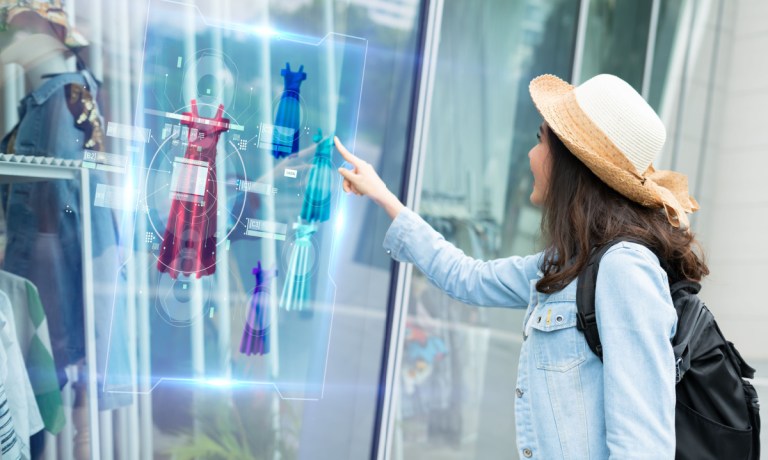Lily Enjoys Early Traction as Retailers Seek AI Help

As retailers try to entice shoppers away from eCommerce, many brands are turning to artificial intelligence (AI).
Among the companies offering their services is Lily AI, the subject of a lengthy profile Wednesday (Sept. 6) by The New York Times.
That report notes that while Lily AI’s services — machine learning, artificial intelligence (AI) and human curation — are in high demand, the company enjoys an advantage in a competitive landscape: it was in business before the AI buzz began, with clients that include Gap, Macy’s Bloomingdale’s and thredUp.
As PYMNTS wrote earlier this year, the company uses AI to help retailers think like their shoppers and pepper product descriptions with customer-centric search terms. Lily AI can also then use the customer language to help retailers optimize their site search, product recommendations and filters.
The company is “unique in specifically solving the website discoverability problem,” Sucharita Kodali, a retail analyst at Forrester, told the news outlet.
“Lily got early traction with big retail names and is well positioned to maintain and grow,” beyond apparel, beauty and home, into sectors such as travel and autos, she said. “The technology is agnostic.”
According to the report, the idea for Lily emerged in 2013 when founder and CEO Purva Gupta realized there was a disconnect between how shoppers thought of clothing and how retailers described them.
“The retail merchant is saying ‘midnight french terry active wear,’ and in consumer-speak that’s a ‘navy blue sweatshirt,’” Gupta said. She saw an opportunity to close this gap, “with a product that would have to be deeply technical.”
PYMNTS has been monitoring this trend for several months, writing in March about AI’s ability to help retailers stand out and reduce expensive returns.
PYMNTS CEO Karen Webster wrote about how AI can help brands and retailers close the gap between the digital and the physical world, using Tonal and Peloton as examples.
“Tonal and Peloton may both be the victims of a change in post-pandemic consumer fitness preferences, but their technology makes it possible for a consumer to have an immersive fitness experience wherever they are in the world,” Webster wrote.
“Apps and streaming tech make it possible for consumers to shop live with influencers and to bring shoppers and sales associates together, live, to review merchandise and buy it without being in a store. At the same time, innovations in AI allow brands to deliver personalized offers or recommendations in context and in real time to consumers as they are browsing a site so they can make more sales.”